|
|
|
|
Publisert:
13.05.2019 | Oppdatert: 10.04.2025
Crop management - how to prepare agribusiness for global climate change

Dr. Oleksii Orlov,
PhD in Agriculture
The need for proper management of
agricultural business in the context of climate change is evidenced by a survey
of farmers conducted in the British Commonwealth of Nations. So in 2010, when
the problem of global climate change was not as acute as it is now, already then
87% of farmers said that rising prices for resources for conducting agribusiness
change the way they use these resources, and every fourth farmer said that
climate change is already has an impact on their business. In main agricultural
producers countries, for example in Ukraine, such changes are already taking
place, what can be done to increase profits in such conditions, we will consider
in this article.
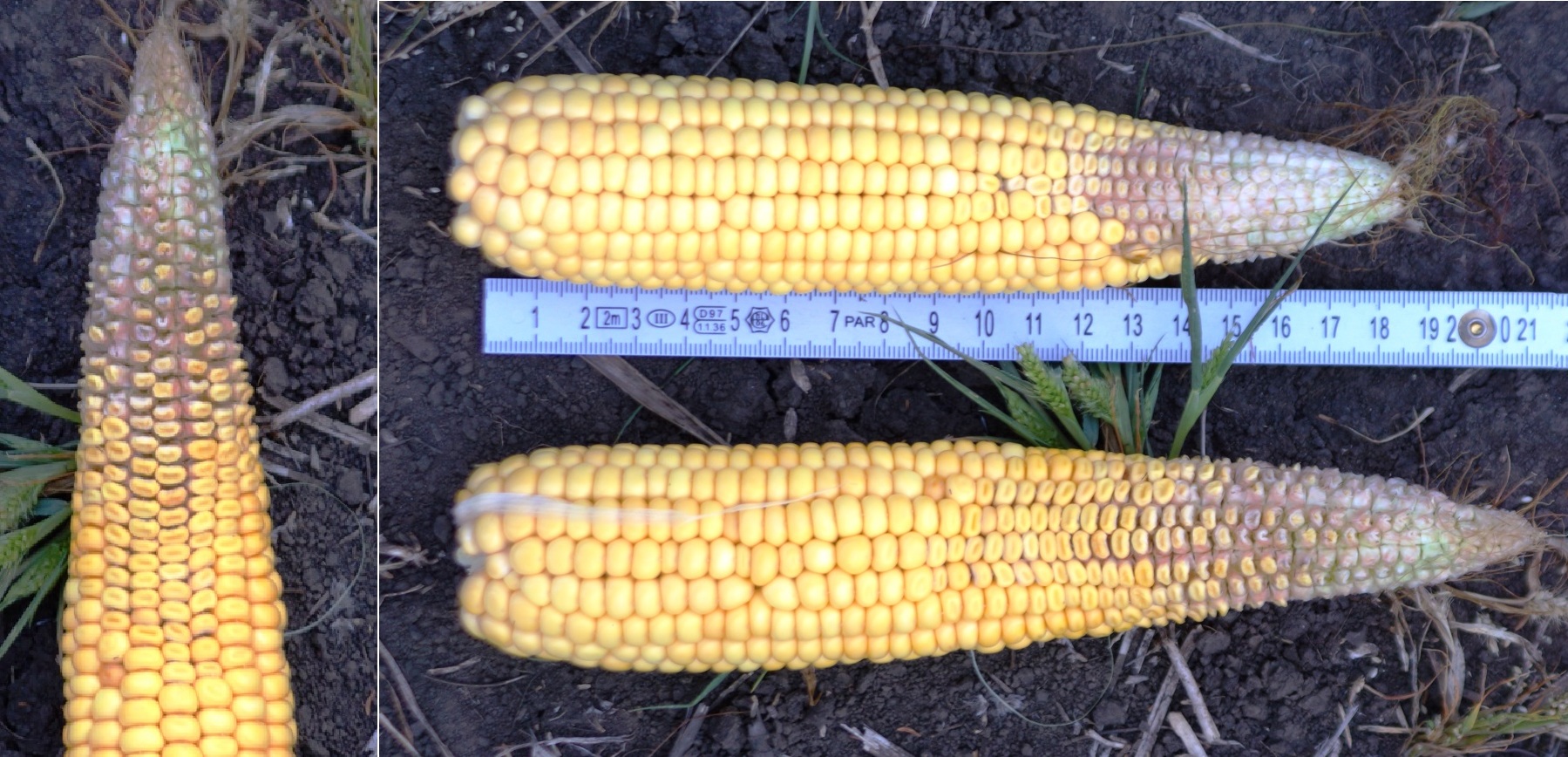
In 2017, an absolute record
was set for the maximum daily temperature during the flowering and pollination
of corn, which led to drought, non-viability of pollen and a decrease in corn
productivity. At the photo - on the cobs of corn there is no part of the grain.
This corn fell into a drought and was exposed to high temperatures during the
flowering period (photo ©
Dr. Oleksii Orlov,
August 15, 2017, Kharkov region, Ukraine). This leads to the fact that farmers
increase investment in irrigation or switch to more drought tolerant crops -
sunflower, safflower, chickpeas, sorghum
BE READY FOR CLIMATE CHANGE!
Ensuring the long-term viability of your business makes
sense, both for you and for yours future generations. Maintaining good
agribusiness and farm management practices will be key to ensuring that the
agricultural business is prepared for the unpredictable effects of climate
change.
Farmers who are prepared for climate change will be the
most resilient and flexible in order to make the best use of these changes to
generate financial gains and increase of capital.
1.
Productivity and yields:
-
There is potential for
significantly higher yields due to increased atmospheric CO2 and
higher temperatures, but this will require more efficient use of nitrogen
moisture from the soil. Some scientific studies have shown that some
varieties of winter wheat can increase yields by 12-28% in warmer climates.
And other crops yields, such as corn,
soybeans and
sugar beets, already seem to take advantage
of climate change
-
To increase yields in
arid climates, modern F1 hybrids and varieties with improved genetics should
be used - resistant to high temperatures and drought and capable of
producing high yields in changing conditions
-
Longer growing seasons,
along with earlier spring growth and ripening, may allow for earlier
harvesting
-
Long periods of drought
and temperatures of more than 25 °C (for example, an absolute record in
2017) can make yield levels less predictable and make mandatory use of
irrigation necessary
-
Although frosts will
become less common, early spring and late autumn frosts can cause more
damage to yield due to the lack of acclimatization of field crops plants
-
Lower soil moisture can
reduce the quality of seedlings and impair the development of some crops,
especially late harvesting and winter crops
2.
Field crops:
-
Northern
and western regions may become more suitable for some crops, but it will
also depend on regional soil types and topography
-
Irrigation will
become necessary in the southern regions and significantly increase
productivity
-
New crops,
varieties and hybrids (for food, farm animals and non-food needs) may be
a good option for increasing yields
3.
Pests and diseases:
-
Populations
of pests and pathogens can survive better in warmer climates, in warmer
winters with fewer frost times, this conditions will increases their
spread, increasing the risks of plant damage and lower yields
-
Plants that are
already prone to stress from drought or heavy rain may be more
susceptible to diseases damage
-
Warmer
and earlier springs can contribute to an earlier active development of
pests populations and damage of crops. The same goes for the fall
season. Pest populations may als
-
o
increase; for example if a temperature increase of only 2 °C can
increase the number of aphid generations from 18 to 23 pcs. in one year
-
Long
dry periods in the summer make it difficult to control pests and limit
the effectiveness of pesticides, but these same phenomena also reduce
the pressure of diseases on field crops
-
Regional differences in abundance of pests populations, type of pests
and spectrum of diseases can make them difficult to control
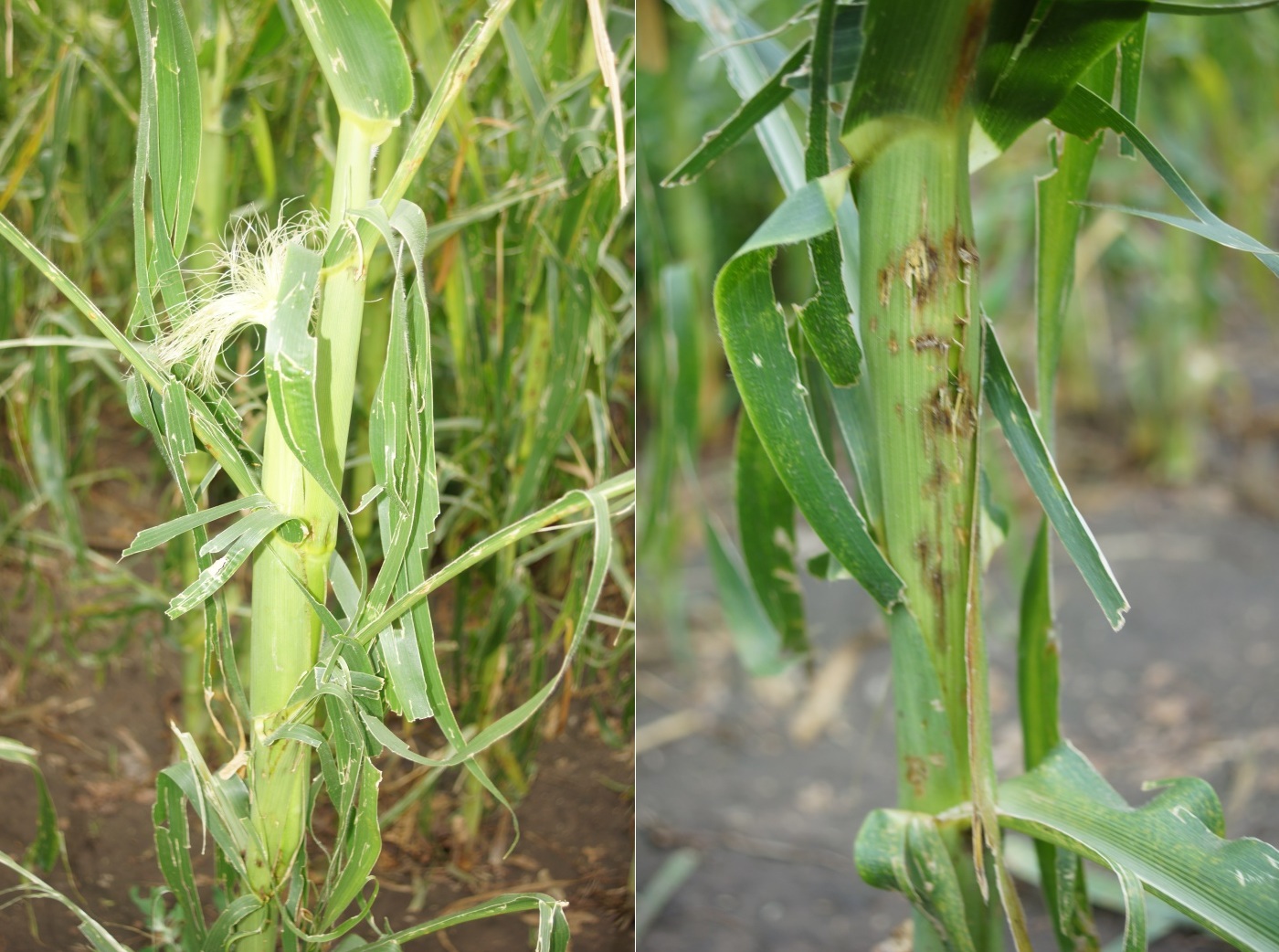
With climate change, the risks of extreme weather events (drought,
strong winds, hail, extreme temperatures) increase.
Plants damaged by heavy rain, hail or drought are more prone to the development
of diseases and death, like this corn in the Cherkassy region, Ukraine.
In this case, you need to immediately spray of fungicide to
reduce yield losses (photo
©
Dr. Oleksii Orlov,
July 14, 2017)
4. Extreme events:
-
Most actions of
climate change show that all regions of Planet are already now to face
more extreme weather events that have a direct impact on the
agricultural business as a whole, individual agricultural enterprises
and crops production
-
Extreme events in
other parts of the World (for example, drought) will also have direct
consequences for all farmers, as they cause market volatility and
unpredictable demand peaks, such as price increases in 2008 when the
price of wheat reached $ 280 / ton
-
Flooding and erosion
of the soil from extreme precipitation and long periods of saturation
with moisture - it is possible to lose valuable topsoil and contaminate
water sources and water bodies
-
Appropriate
strategies for crops cultivation and tillage, improved drainage and
planting of buffer strips and forest belts will help solve this problem
-
Flooding has
significant financial implications for the farming business. To solve
this problem, the creation of modern drainage systems, drainage ditches,
grass buffers, ponds or wetlands for a slow flow of water, increasing
penetration into the soil and reducing flooding, and the cultivation of
forests and energy crops that are resistant to flooding of species can
help
-
Maintaining the
quality and structure of soils and increasing the content of organic
substances will contribute to water retention and improved drainage
-
Collecting and
harvesting of excess rainwater for use during periods of drought

At the photo - flooding of sunflower field. Floods have
significant financial implications for the farming. To solve this problem, the
creation of modern drainage systems, drainage ditches, grass buffers, ponds or
wetlands for a slow flow of water can help, increase penetration into the soil
by
CTF and reduce flooding, growing forests and
energy crops that are resistant to flooding of species (photo
©
Dr. Oleksii Orlov)
5. Changes in seasonality:
-
Be prepared to
change the traditional dates of tillage, the timing of agricultural
operations and harvesting, if necessary
-
Consider the
possibility of changing the timing of financing and the supply of
resources, discuss this with your suppliers and
agribusiness consultants about possible
changes in time and technology and, if necessary, agree on an
action plan or business plan for these
changes
-
Consider how best to
use longer growing seasons
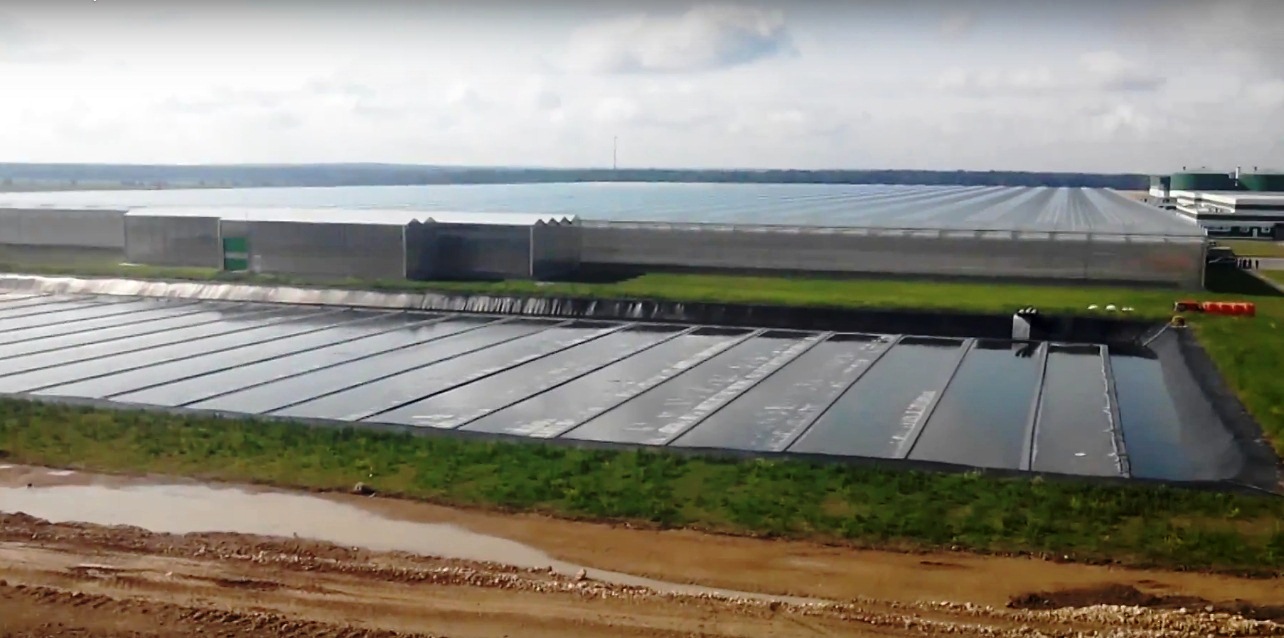
Tanks for collecting rainwater in one of the most modern
greenhouse complexes in Europe - water is collected both from the area occupied
by greenhouses and from additional areas. With proper collection and storage,
rainwater is an economical and constant source of quality water. Compared to tap
water that is stored in ponds and treated with chemicals, rainwater is
considered a safer, better, and more cost-effective alternative to agriculture
Necessary actions that will be ready for climate change:
-
Diversify
crop growing technologies to counter unpredictable weather conditions
and climate change
-
Explore
the possibility of using drought-resistant and heat-resistant hybrids
and varieties of crops
-
Think
over the load on local sources of fresh water and, if necessary,
consider improving the efficiency of your irrigation systems, installing
a rainwater harvesting systems, or building a drip irrigation system and
an on-farm reservoir
-
Improve drainage, humus content, soil structure and take those actions
that will avoid soil erosion
-
Consider improving existing forest belts or creating new ones
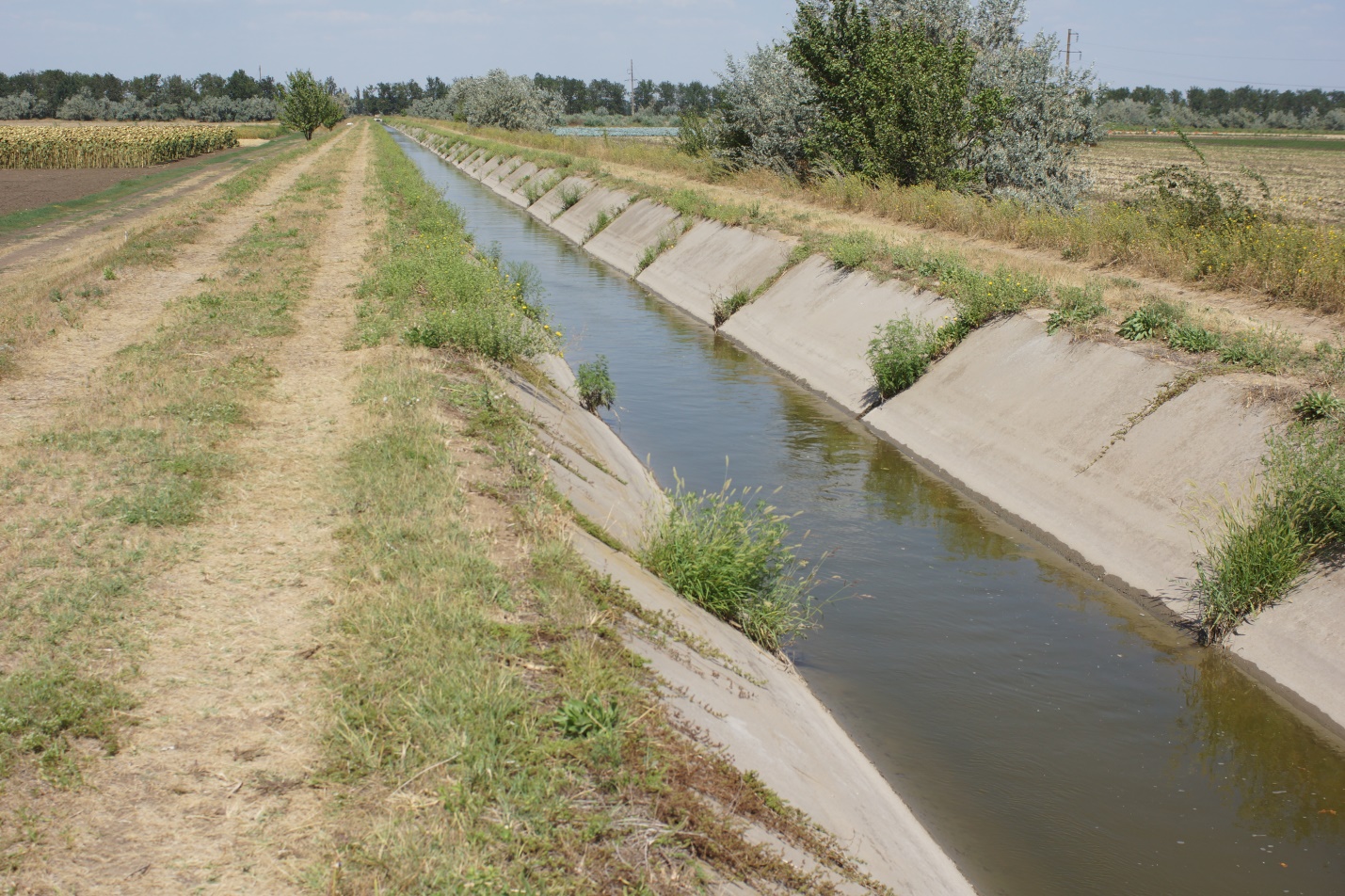
When water is supplied to the fields through open
channels, a large amount of water is lost due to evaporation and infiltration
into the ground. Under the conditions of climate change, water will rise in
price, and the transportation of water and irrigation in an open way is already
becoming a very expensive and inadmissible pleasure
(photo
©
Dr. Oleksii Orlov)
AGRICULTURAL MARKETS - FALLS AND
NEW OPPORTUNITIES!

Forecast - the dependence of certain regions of the world on
food exports and imports due to climate change (Source: UN’s Food & Agriculture
Organization Global Perspectives Studies)
-
Prices may rise due
to a potential global demand of wheat and other grains due to changing
weather conditions, and current wheat, corn and rice producing areas may
become less suitable for growing its. The same goes for other crops and
plants
-
Local markets of
individual field crops can grow and become more significant due to the
growth of global markets, the instability of global supplies and amid
growing global concern about
food security in the World
-
Consumers' growing
interest in the origin of food and how many “food miles” this food
before that they buy and consume, and how the food is produced and how
"healthy" this food, can also offer for farmers the new opportunities to
organize the production process, successfully enter the markets and make
profitable sales of their food products
-
Biofuel for
automobile transport is a promising area for agribusiness. Now Brazil
and the United States lead the industrial production of ethanol fuel,
together occupying 83.4% (2014) of world production. In 2014, Brazil
produced 23.4 billion liters. ethanol, which is 25.2% of the total
ethanol production in the world used as fuel. In the UK, it is planned
to get 10% of biofuels from the total volume of automobile fuel by 2020.
Biofuels can be produced in the form of bioethanol or biodiesel,
although the bioethanol market currently looks stronger. The development
of bioenergy in Ukraine (biofuels and biomass) creates new jobs and a
new market for field crops, as well as reducing greenhouse gas emissions
associated with the use of fossil fuels
-
Grain and oilseed
farmers have good opportunities to produce the necessary raw materials
to supply new markets for various types of biofuels and to obtain
competitive prices for their crops, as well as use for the production
from poorer lands
-
The use of electricity received at farmer's solar stations to charge
electric cars already reduces greenhouse gas emissions and has excellent
prospects
-
There may be an
increase in demand for the production of field crops due to an increase
in the production of new plastics, oils and building materials, which
could replace products based on oil and fossil raw materials
-
Alternative crops
and plant species to new markets can open up new opportunities, help
maintain business efficiency and help diversify the agricultural
business
Necessary actions:
-
Explore the possibilities of business diversification in the direction
of the possibility of producing energy crops and
get expert advice for the feasibility
of the special business improvement projects
-
If
you plan to grow crops for new climatic conditions and markets or grow
efficiency of production, conduct an appropriate
audit to select the best technology and
study the markets and logistics
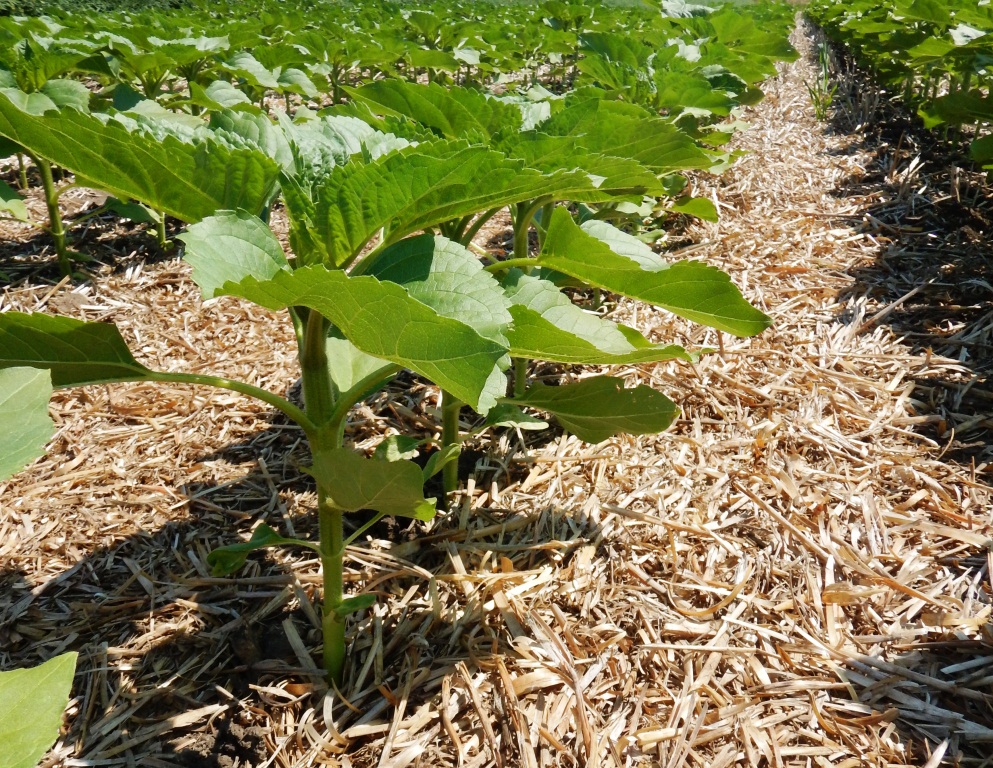
Some technologies and crops will have benefits
in drought conditions -
sunflower field by No-Till in the
Nikolaev region, Ukraine. Resource-saving
and soil-protecting technologies in conditions of climate change
will have advantages. As in this case, when a sunflower seeds yield
was more than 3.5 t per ha
/ 3123 pounds per
acre (photo
©
Dr. Oleksii Orlov,
05.31.2017)
CONSERVATION OF SOILS AND
MOISTURE, REDUCED ENVIRONMENTAL IMPACT FOR FOOD PRODUCTION:
-
It
is necessary to preserve the environment and nature, while improving the
profitability of the business and increasing food production
-
Create and maintain forest belts, hedges,
uncultivated land and permanent pastures that naturally absorb CO2
-
Improve nutrient management and apply a
good crop fertilizer system to reduce leaching and flushing of chemicals
into water bodies. For example, apply fertilizer on wet days to increase
their absorption by plants
-
Consider the benefits of growing
different crops — spring and winter crops — to reduce production costs,
reduce the number of operations needed, reduce the risks of soil erosion
in winter, and potentially increase natural biodiversity on farm
territory
-
Consider using
cover crops and Strip-Till to improve
soil structure, such as mixtures of red clover, vetch and rye
-
Preserve
and increase the humus content in the soil by applying organic
fertilizers and preserving plant debris in the field
-
Try to reduce the intensity and frequency
of processing your soils - for example, it may be advisable to change
the tillage methods to
Strip-Till or No-Till and switch to
CTF
-
Reduce
soil erosion - avoid treating moist / saturated soil with soil and use
buffer strips and forest belts to protect from winds
-
Conduct a special
audit to take stock of all your
activities in the field of environmental and soils protection and
business development prospects in the new environments
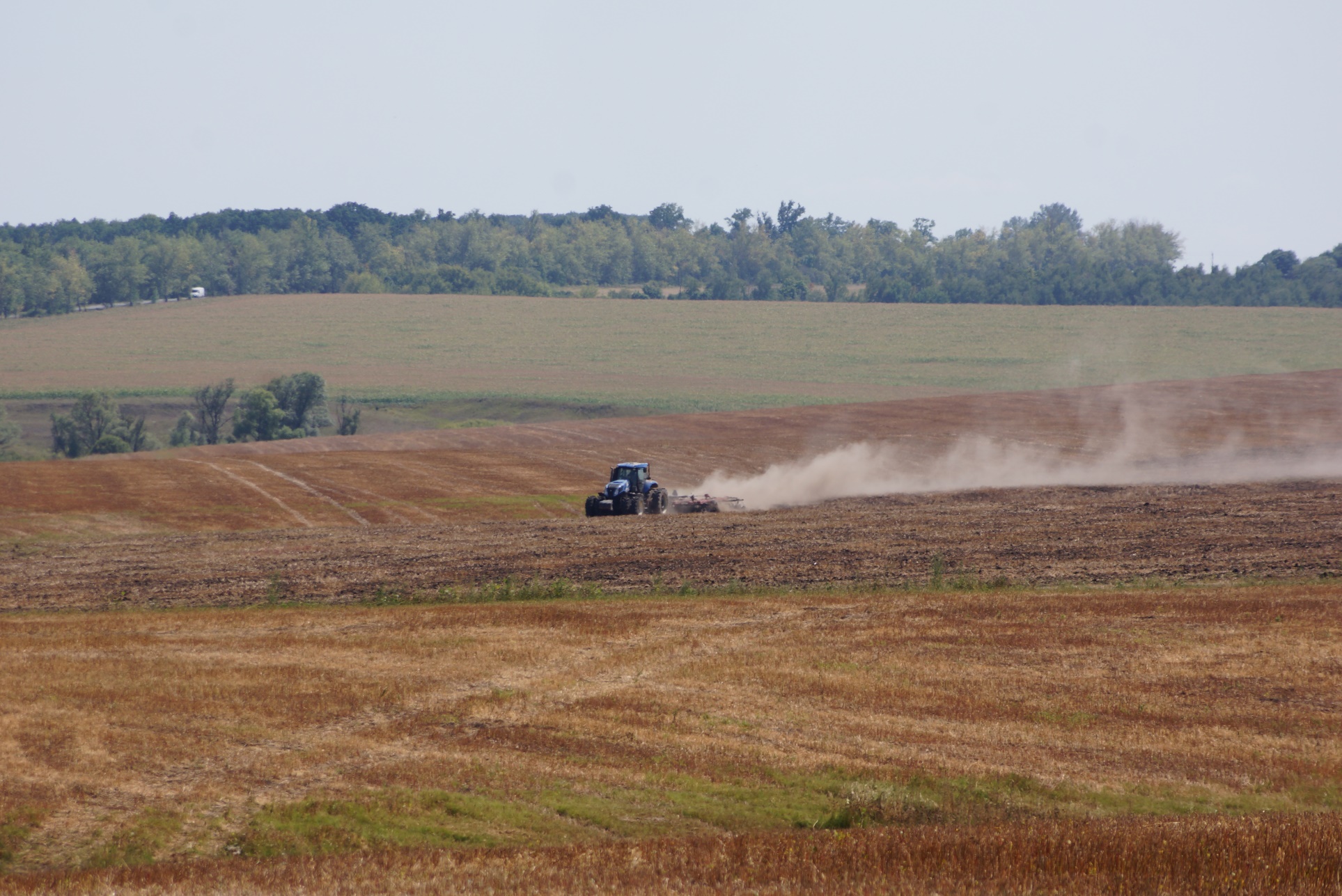
In conditions of climate change, those farmers will have
benefits who will: retain moisture in the soil - because moisture it is a money;
reduce resource consumption; protect their fields from erosion and increase soil
fertility using No-Till and cover crops (Strip
-Till). At the photo - one of the types of soil fertility loss - the
drift of the soil by the wind in time of disc tillage in drought and windy time.
Soil preparation is best done when the soil is wet (photo
©
Dr. Oleksii Orlov)
Contact us for
consulting, creation, development and support of projects and creation of a business turnkey
Disclaimer
© Agricultural Consulting
Service. Technical audit of agribusiness. Agricultural business projects and
agricultural companies turnkey. Consulting services for agriculture,
aquaculture, natural resources, environment, safe energy in industry and
home construction. Increasing the
profitability of business, obtaining additional profits
|
|









